“I’ve been known to complain about the state of industrial music, and I figured it was time to put my money where my mouth is and do something to change things.”
Distorted Memory mastermind Jeremy Pillipow has always been a forward thinker. As an anomalous dark electro presence in the Canadian industrial scene, his work has always been characterized by a more considered approach to composition and atmosphere, especially on 2011’s Swallowing the Sun where tribal and global music influences sat next to tightly sequenced basslines and black metal growls as if it were the most natural mixture in the world. With the recent self-released Temple of the Black Star EP, Pillipow further expanded what Distorted Memory could be and do with tasteful nods to witch house, both in the title track itself and in his curatorial selection of remixers, an interest similarly reflected by his recently initiated side-project Deathaus. Jeremy kindly set aside some of his Labour Day weekend to answer our questions about albumcraft, how Distorted Memory evolves creatively with each release, and life in the coldest city on Earth.
ID:UD: Even taking into account the evolution between your first and second LPs, “Temple of the Black Star” felt like it was out of left field, a stylistic and aesthetic shift not divorced from some of the tribal and atmospheric sounds you were using on “Swallowing the Sun” but exploring them in a totally different context. Can you tell us about what inspired the EP, and how it fits into the greater picture of what you want Distorted Memory to be creatively?
Jeremy: It was one of those things that started off very simply, and quickly snowballed into the finished project. Right after completing Swallowing the Sun I wrote the track “Temple of the Black Star”, with the tribal elements from the last album still bouncing through my head. At the time I assumed the next album would follow in this same direction. After the album started to progress I realized that the tribal elements were starting to fade out, being replaced by new ideas and influence so this song no longer “fit”. For a while I thought it would just get forgotten and lost forever, but after hearing it again recently I felt that it should get released in some form or another. The initial plan was to just give it away on its own as a free download, but I decided to gather some remixes to make things a little more interesting. Having been very enamoured with this new movement of dark “witch house” music I figured I would source remixes through that scene.
I’ve been known to complain about the state of industrial music, and I figured it was time to put my money where my mouth is and do something to change things. I felt it was really important to help build a bridge between the two camps, and so far I think it has been very successful in that regard. Once I had a few of the first remixes back I noticed that because of the varying styles and the lack of vocals it didn’t sound like the same song over and over again like most singles do. I jumped on this and decided to treat them all as a whole, like a piece of classical music with several movements. Luckily it all worked out, I really was not sure if it would until I had all the mixes back.
I don’t want anyone to take this release as an indication of how the next album will sound, because it won’t sound anything like this. Distorted Memory is not turning into a witch house project, however the idea of being brave with ideas and trying new things will be what ties all future releases together.
ID:UD: Can you talk a bit about what drew you to witch house and what you think its relation to industrial could be? What specific similarities or differences between the two do you think are worth exploring?
Jeremy: Witch House is a two sided coin for me, both sides being good. One one hand WH picks up the pieces from where the industrial music I loved fell apart. In so much WH I hear the same things that drew me to industrial in the very early days of acts like Suicide Commando, :wumpscut:, Plastic Noise Experience, and The Klinik. This simple, dark, raw, and passionate and mysterious music. I have no doubt that if a lot of these acts came out 10-15 years ago they would have been big names in industrial at the time. Or on the same note if those early industrial bands started right now with the sounds they were using back then they wouldn’t be part of the industrial scene, they would be right in there with the WH acts. Even the aesthetics and the way the artists present themselves with such ambiguity is similar to the early days of industrial and EBM.
There is a whole other aspect to WH that doesn’t really jive with anything industrial though. The hip hop, disfigured pop soaked end of things. For me this is the other side of the WH coin. This drag crazed mutant pop side of things puts me right back into the early days of breakcore. Much like industrial breakcore has fallen apart for me, turning into mainstream club music. The only difference is that when EBM went trance, breakcore went dubstep. I don’t have a problem with that completely, but like industrial I think a lot of the care free experimental (insane) spirit of early breakcore has been lost. These WH folks seem to once again be picking up the pieces, putting them back together in their own way and I love them for that.
“I relate more to Ennio Morricone than I do to any dance music producer.”
ID:UD: The room which inspired “Temple Of The Black Star” sits in the Manitoba Legislature, is rife with Masonic allusions, and captures and directs ambient sound towards the centre of the room, where a marble star is laid in the floor. What meaning does that place hold for you?
Jeremy: I wouldn’t say this place has significant meaning for me, but it definitely holds a lot of inspiration. That building is amazing for more reasons that just that room. It was created using sacred geometry with the intent of having influence of the people within. The whole purpose of the building was to create a space that would make its inhabitants more happy, intelligent, and enlightened. In turn this was intended to help people make better decisions, and in general be better human beings. I find this concept fascinating. I wondered if the same idea could be done with an album, and that was part of my intent with the Temple release. My goal is that they way the album is presented will create a sort of ritual music experience for the listener that can enlighten them in some way. If nothing else this ritual will hopefully open up people’s eyes to new sounds and ideas.
ID:UD: One of the most interesting things about “Swallowing the Sun” for us was how much emphasis you placed on the texture of the record, it has a very cohesive mood across it’s run time. That emphasis on atmosphere was traditionally a big part of dark electro but has fallen by the wayside with a lot of current releases. Were you aiming for a classic kind of sound, or did that come about from the songs themselves?
Jeremy: I wouldn’t say I was intentionally trying to go for a classic sound, but the idea of making the album and songs have some atmospheric depth is certainly a conscious one. The industrial music that shaped me was from a time when atmosphere and progression was as important as any other aspect of an album, and I don’t think I will ever loose this mentality. Even before getting into industrial music, when I was really young, I listened to a lot of stuff like Tangerine Dream, Mike Oldfield, Enigma, etc., so as long as I’ve been a music fan I’ve been a fan of music with strong atmospheres. I don’t like the idea of just hearing a song, what I really love is when a song seems to exist in its own world. To me the atmosphere isn’t just a part of a song, it is a frame, an alternate reality in which a piece of music can exist.
As a musician I relate more to Ennio Morricone than I do to any dance music producer. I think my biggest pet peeve with current industrial music is that if you skip through a lot of albums you get 14 songs that all start out with a kick/bass. Every song starts the exact same way, there is no personality. I find this really insulting as a listener, the same was I get insulted as a viewer by the way so much current TV is edited with constant recaps and forced cliffhangers before a commercial. I don’t want to hear an album like that, I don’t want to make an album like that, and I really don’t want to short change my listeners by giving them an album like that.
ID:UD: It’s a weird time for music. Albums have really become de-emphasized with individual track downloads and the ability to self-release songs as soon as they’re done. Do you find you still write for that format? Is albumcraft a part of how you approach making music?
Jeremy: Absolutely. I don’t think in terms of single songs. As soon as a release is complete and I am starting a new song thoughts about an album are already running through my head. I really don’t enjoy singles as a listener, I think it has something to do with the compulsions I have as a collector and an organizer. When an artist releases a single song, even if I really love it I generally don’t download it when it’s made available on it’s own. I’ll usually wait it out until there is an album or at least EP. People always talk about the album format being lost in the current music market, and while that is certainly true for a lot of musicians I don’t think it is completely true. It’s generally the more club oriented music that follows this single song release format, and since the majority of the music I listen to isn’t club oriented I seem to have no trouble finding the album format alive and well.
Sometimes I think my need to write full albums is a little crippling. It may be better in terms of gaining a wider audience to use the single format but I can’t bring myself to do it. It can also make writing difficult because often before an album is complete I’ve lost some interest in the theme or sound I’m going for, or just end up taking things in a different direction subconsciously because of new influences. Still I stick with it. Luckily “Temple of the Black Star” opened my eyes to the fact that I can take single songs that don’t fit a current album but still do something interesting with them. I think people can expect to see more left field releases from me between albums to utilize the misfit songs.
ID:UD:You went with a self-release model for “Temple of the Black Star”. How did that compare with your experiences releasing via Noitekk and COP Intl? Is a hybrid approach (labels for some releases, self-release for others) an idea you want to explore further?
Jeremy: In a lot of ways I’d say doing it myself was better. I really like being in control, seeing every download and sale, knowing exactly how the release is doing at any given moment. I’ve always enjoyed selling merch directly to fans, so by doing this release myself I get to be in complete control of that. Unfortunately by doing it this way I loose quite a bit in terms of distribution. For all the complaints people make about scene labels it is very difficult to push an album through as many channels as they can by yourself. It can be done, but the resources take time to establish. I don’t know that I am ready, or willing, to go completely independent yet, there are still too many advantages to having a label release.
It can be very frustrating waiting for things like sales statements and royalties and really not knowing how well your product is doing until months later when dealing with a label, but at the end of the day more people will probably hear your music, and that’s kind of the point of doing this. I think I will be moving towards a sort of hybrid approach where full length albums will be released via the label and singles, EPs, and special editions will be pressed myself. At the moment that seems like the most effective model, but things change quickly in this industry so you never know what will happen in the future.
ID:UD: You also initiated a new project recently in Deathaus, which seems more in line with many of the post-witch house sounds that have been emerging this year. What are you aiming to explore with that project? How does it relate to Distorted Memory, especially where you seem unafraid to explore those kinds of ideas in DM?
Jeremy: Although I am getting more and more adventurous with DM there are still certain musical ideas I have that personally I don’t think fit DM. It’s not even a matter of style because in a lot of ways the two projects share similar sonic pallets. Deathaus is a place where I can explore certain, tones and emotions that I don’t think fit with the DM aesthetic. It is also a place were I feel I have no responsibility to an established fan base. If I want to do something I will do it, without hesitation. I have always needed an outlet outside of DM to try different things. For years Cakebuilder [Jeremy’s defunct breakcore project -ed.] fulfilled this role for me, and although that project did quite well I just felt like I had outgrown it and needed a fresh start. For now the biggest role for Deathaus will be in remixes. So often when doing remixes I like to take the track in a direction that does not makes sense to label as a DM mix, but Deathaus creates the perfect opportunity to let these ideas flow.
“…there is a difference between respecting fans by giving them quality music and giving them a certain sound just because they are expecting it.”
ID:UD: It seems like that’s a very grey area, at least insofar as how you service your fanbase as Distorted Memory while not being totally beholden to fan expectations. Do you ever feel straightjacketed by what people want or expect from you as Distorted Memory? Have those factors affected the follow up to Swallowing The Sun?
Jeremy: I used to feel confined by this, but it is something I have been working towards breaking and I think that is finally happening. I’ve taught myself that there is a difference between respecting fans by giving them quality music and giving them a certain sound just because they are expecting it. I’ve come to realize that no matter what new direction I take as long as I do it with integrity and passion it will succeed. People in music scenes tend to get all bent out of shape when a musician changes styles, especially if it is by incorporating some new trend in music. I think the reason for this is that listeners are really quite smart. They can, without knowing why, see through an artist when they are trying to latch onto something current and popular and force it into their music with the hopes of gaining popularity from it. If a musician adds new and different elements to their music, and they are doing it with class and integrity, it tends not to rub as many people the wrong way.
This is the standard I have set for myself. I no longer hold back ideas for fear of negative reactions, but I also make sure I try new ideas for the right reasons. At the end of the day if there is something I really love, and I think it fits with my own vision for the Distorted Memory aesthetic then I will do it. I think all these personal revelations will show through quite strongly on the next album. The music on the next album is exactly what I want it to be at this point in time. It’s giving me more self satisfaction than anything I’ve previously done, so I think that alone will make it a success.
“Winnipeg is a dark mistress, she is cruel and masochistic, but without her I don’t think I would have grown to be the person I am.”
ID:UD: We were really fascinated by your recent post on Violent Playground about life in Winnipeg, and its influence on your work. As one natural born West-Coaster and one displaced Maritimer, we’re interested in Winnipeg as this sort of bizarre, Lynchian outpost in the middle of Canada, a place that seems to have a weird pull for creative types of all kinds. How does the city itself influence your work? Would there be a Distorted Memory without a Winnipeg?
Jeremy: Winnipeg is a very difficult place to explain. It is poor, cold, and isolated. Complaining about our city is like a sport, but the reality is that the majority of people never leave, or when they do they often come back. Ask anyone why they came back after moving away and usually they can’t give you a clear answer. Winnipeg has this amazing and horrible magnetic pull for the people who grew up here. We are the coldest city in the world, we are so extremely isolated, and our crime and poverty is unimaginable. Yet it is the most creative city I’ve ever seen. I’ve been all around the world, and places like Montreal and Berlin known for their artistic culture have nothing on Winnipeg if you are thinking in terms relative to size. Music, art, dance, theatre, and any art form you can imagine has such a strong foothold here. I think it is because of Winnipeg’s faults that so many people turn to creativity, as a form of escapism.
There is a running joke that if you grow up in Winnipeg you have three choices, join a hockey team, join a band, or join a gang. There is a lot of truth to that. When it is -20 to -30 for months at a time and the snow is up to your waist there is nothing else to do but bunker down in a room somewhere and do something creative. Would Distorted Memory exist if I didn’t grow up in Winnipeg? Honestly I’d have to guess not. If I grew up somewhere else music may never have become as important in my life as it has. If I wasn’t surrounded by creative people to help and inspire me I don’t know that I wouldn’t have given up before getting good at what I do. Winnipeg is a dark mistress, she is cruel and masochistic, but without her I don’t think I would have grown to be the person I am. As Venetian Snares famously explained to the world, “Winnipeg is a frozen shithole”…and I fucking love it.
All Distorted Memory releases are currently available via the DM website, and you can download Temple of the Black Star in a pay-what-you-want model via Bandcamp.

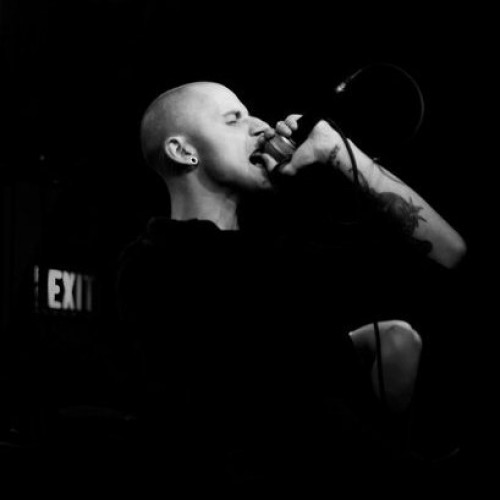


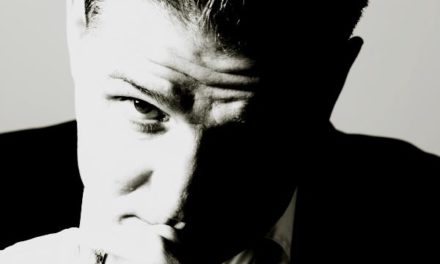
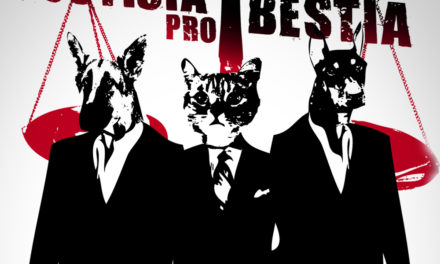
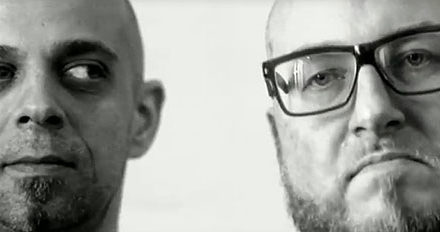
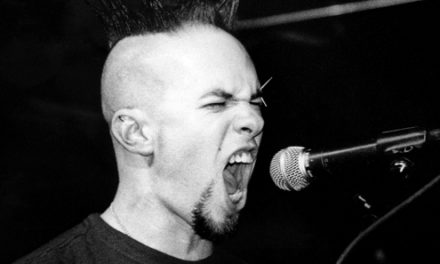
Trackbacks/Pingbacks